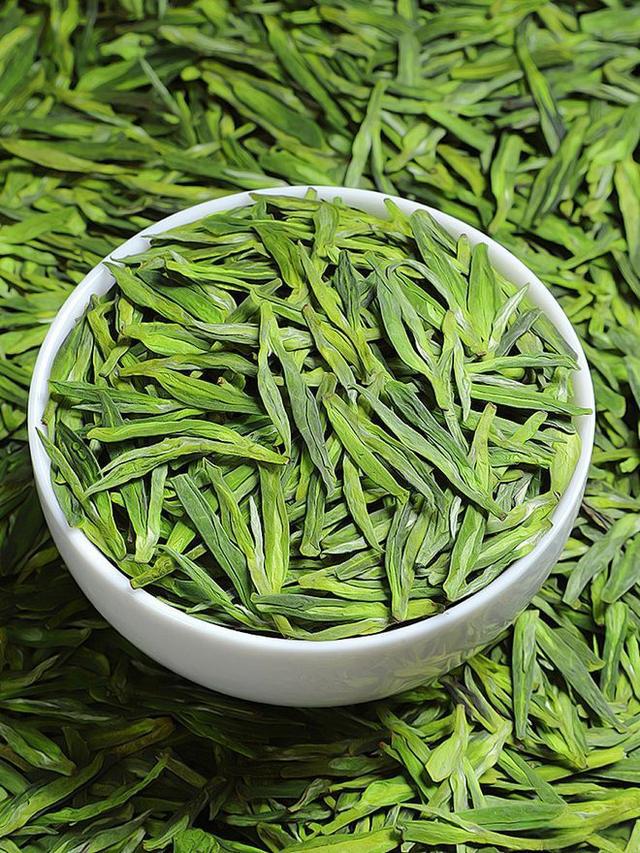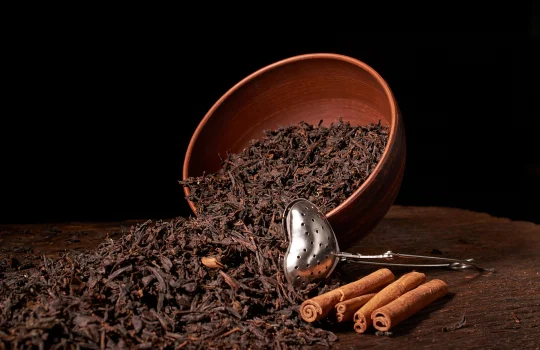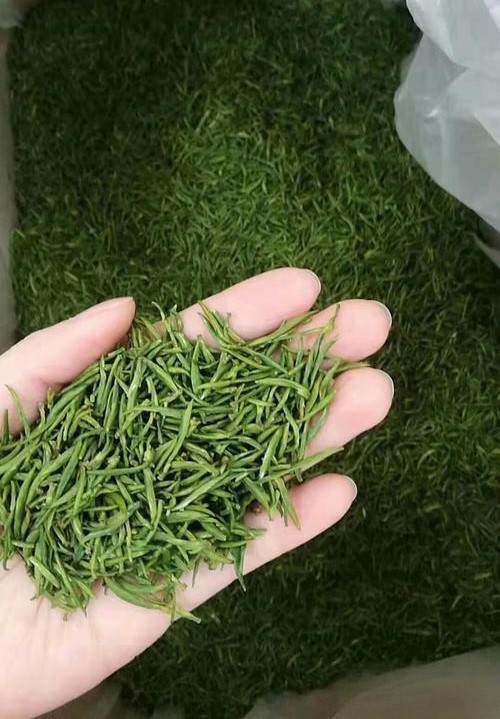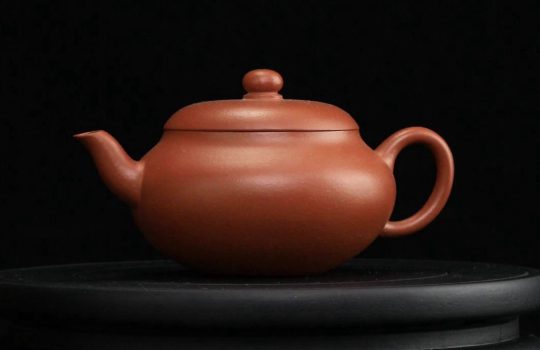
Place of origin
The areas around Shifeng, Longjing, Wuyunshan, and Hupao in West Lake, Hangzhou, Zhejiang Province.
Quality characteristics
Dry tea: Flat and straight in shape, green with a hint of yellow in colour, straight and smooth, beautiful and uniform.
Tea colour
Bright yellow-green.
Aroma
Elegant and refined, with subtle hints of roasted beans or orchid beans.
Overview of Longjing Tea
Since ancient times, the scenic beauty of West Lake and the renowned Longjing tea have been the ‘favourites’ of literary scholars and poets, inspiring countless exquisite verses and masterpieces. West Lake Longjing is China’s premier tea. Longjing serves as both a place name, a spring name, and a tea name, with a history dating back centuries. It is celebrated worldwide for its ‘Four Excellences’: emerald green colour, rich aroma, sweet taste, and elegant shape. Longjing tea is produced in the areas around Lion Peak, Longjing, Wuyun Mountain, and Tiger Run in West Lake. Historically, it was classified into four categories based on its place of origin: ‘Lion, Dragon, Cloud, and Tiger,’ with the tea from Lion Peak being the highest quality.
Storage Methods
West Lake Longjing tea is highly susceptible to moisture and spoilage. After purchase, it must be promptly wrapped in paper in 0.5-kilogram packages and stored in a jar lined with block-shaped lime (unabsorbed, unweathered lime) at the bottom, then sealed and stored. When stored properly, after half a month to one month, the tea’s aroma becomes even more fragrant and rich, and its taste more fresh, mellow, and refreshing. Well-dried Longjing tea can maintain its green colour, high aroma, and mellow taste even after one year of storage.
The benefits of West Lake Longjing tea
West Lake Longjing tea has the effects of refreshing the mind, promoting saliva production and quenching thirst, and reducing neutral fats and cholesterol in the blood. It also has antioxidant, anti-mutagenic, anti-tumour, cholesterol-lowering, low-density lipoprotein-lowering, blood pressure-lowering, platelet aggregation-inhibiting, antibacterial, and anti-allergic effects.
Harvesting and processing techniques
The exceptional quality of West Lake Longjing tea is achieved through a meticulous production process. The raw material consists of buds and leaves picked at the stage of one bud with one leaf or one bud with two leaves just unfurling. The tea is then processed through several stages, including withering, pan-frying, re-moistening, sorting, and storage. The stir-frying techniques for Longjing tea are quite complex. Depending on the type of fresh leaves and the stage of stir-frying, ten main techniques are employed: shaking, pressing, pressing down, spreading, tossing, flipping, straightening, grasping, pressing, and grinding.
A Little Story About West Lake Longjing Tea
The Origin of Hangzhou’s Famous Dish, Longjing Shrimp
According to legend, the famous dish Longjing Shrimp is related to Emperor Qianlong’s trip to the south. One day, while Emperor Qianlong was travelling incognito around West Lake, it suddenly started to rain. Emperor Qianlong had no choice but to take shelter at a nearby tea farmer’s house. The tea farmer was warm and hospitable, serving Emperor Qianlong a cup of fragrant and delicious Longjing tea. Emperor Qianlong was so impressed by the tea that he couldn’t stop praising it, thinking to himself that it would be wonderful to bring some back to the palace. However, he felt too shy to ask the tea farmer for some. So, when the tea farmer wasn’t looking, he grabbed a handful of tea leaves and hurriedly hid them in the pocket of his imperial robe, which was tucked inside his casual attire. After the rain stopped, Emperor Qianlong bid farewell to the tea farmer and continued to explore the scenic beauty of West Lake. The lake was particularly beautiful after the rain, and Emperor Qianlong lingered among the scenery until dusk, when he finally arrived at a small tavern for dinner. He ordered a few dishes, one of which was stir-fried shrimp. At that moment, Emperor Qianlong felt thirsty and remembered the Longjing tea in his pocket. He lifted his casual attire to retrieve the tea and handed it to the waiter, asking him to brew a pot of tea. Just then, the waiter spotted the corner of the dragon robe and was startled. He took the tea leaves and rushed into the kitchen. The chef, who was stir-frying the shrimp, heard that the emperor had arrived and, in his panic, mistakenly sprinkled the tea leaves the waiter had brought into the shrimp dish. The waiter, in his haste, then served the ‘tea-leaf stir-fried shrimp’ to Emperor Qianlong. Emperor Qianlong, who was famished, saw the dish with its white, tender shrimp and green, fragrant tea leaves, and his appetite was whetted. After tasting it, he found it fragrant and delicious, and praised it repeatedly: ‘What a delicious dish! What a delicious dish!’ From then on, this dish of Longjing shrimp stir-fried in haste became a famous dish of Hangzhou.



